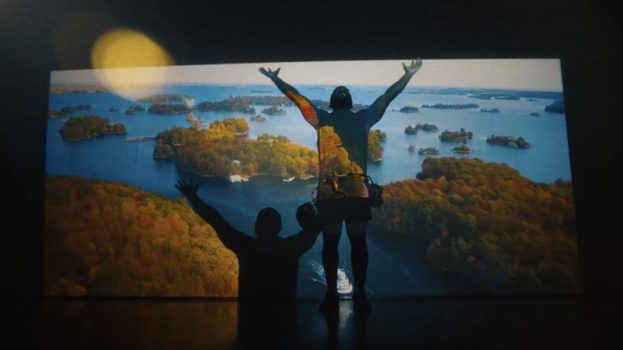
By Sherry Noik
Capitalizing on the fact that 43% of visitors to Newfoundland and Labrador take part in whale watching, the province’s latest tourism campaign – “Hello Humpback” – is looking to make a profound experience that much more memorable, with the help of AI.
Newfoundland and Labrador Tourism is encouraging visitors to upload photos of any and every whale they spot to a campaign website that will in turn produce a personalized a biography of the animal’s life using existing-marine sighting data.
Produced by St. John’s-based agency Target, the website uses automated image recognition to identify whales based on markings unique to each animal that are then cross referenced with international research organization Happywhale’s database of more than 70,000 humpbacks. Target’s custom-trained generative AI then takes all of the known information about a given whale to create its life story.
“With ‘Hello Humpback,’ we’re not just telling a story, we’re inviting people to help write it,” says TJ Arch, creative director at Target. “You take a photo of a whale in Newfoundland and Labrador, and suddenly you’re part of its history. That’s a powerful emotional moment.”
Arch says the campaign is tailor made for social media as it allows users to share more than just vacation photos.
“We’re arming them with a better story when they talk about their experience here,” he says. “We’re giving them stuff to share, and we’re hopefully engaging them in a way that they are much more passionate about sharing their story, so that their networks will also see that.”
Target developed the AI model – nicknamed “Moby Bic” – in-house. Arch tells strategy that it was important to ensure the model was both accurate and maintained the brand’s tone.
“We didn’t want AI hallucinations, so it has strict instructions … it can romanticize certain things, but it can never just invent things out of thin air,” he says.
Target carried out a series of quality-control tests on hundreds of sample stories to fine-tune the model, Arch adds.
“Krystal, a grand lady of the deep, made her first known appearance near Witless Bay in late July 2007,” reads one sample story. “Then, as quietly as she arrived, Krystal vanished into the folds of the Atlantic … For a decade, she kept her secrets as only a whale can – wandering who-knows-where beneath northern skies until a sharp-eyed observer glimpsed her again in 2017, this time near St. Vincent’s.”
Travellers can sign up to get future updates on “their” whale with the knowledge that they are contributing to continuing conservation efforts. Every new photo adds to a dataset used by marine biologists to monitor whale-population trends and migratory patterns.
“Hello Humpback” is one part of a larger 2025 platform that focuses on Newfoundland and Labrador as a destination for authentic Canadian experiences. While the timing lines up with renewed interest in travel within the country, Arch says the whale-watching campaign was developed last year before the Canada-U.S. trade war had kicked off.
“Our tariff response was very much aligned with the people campaign that had already been out there in the market,” says Darrell Smith, director of marketing and visitor services at Newfoundland and Labrador Tourism in reference to March’s “Silver Linings” campaign, which highlighted the “Buy Canadian” bona fides of the province’s small businesses.























